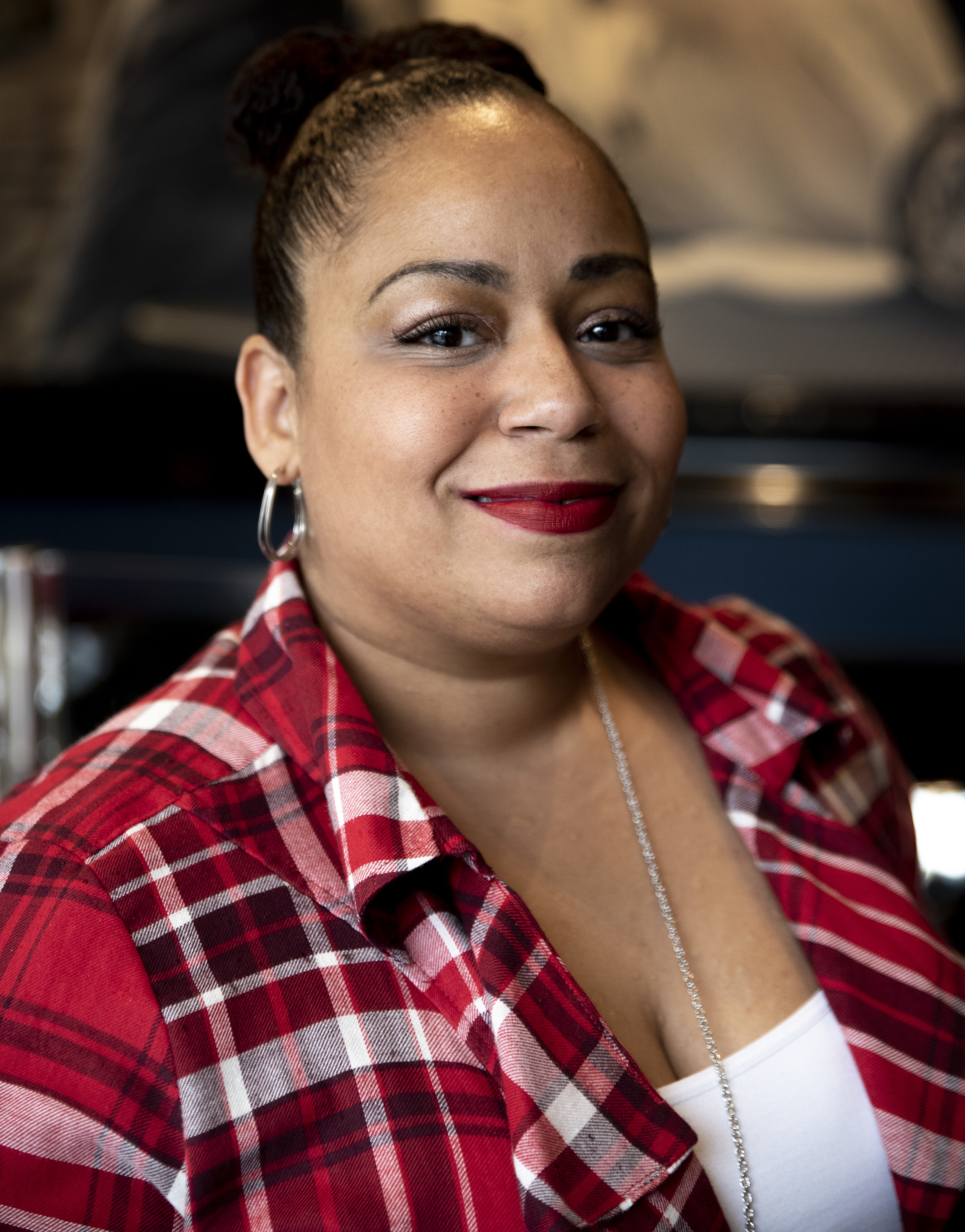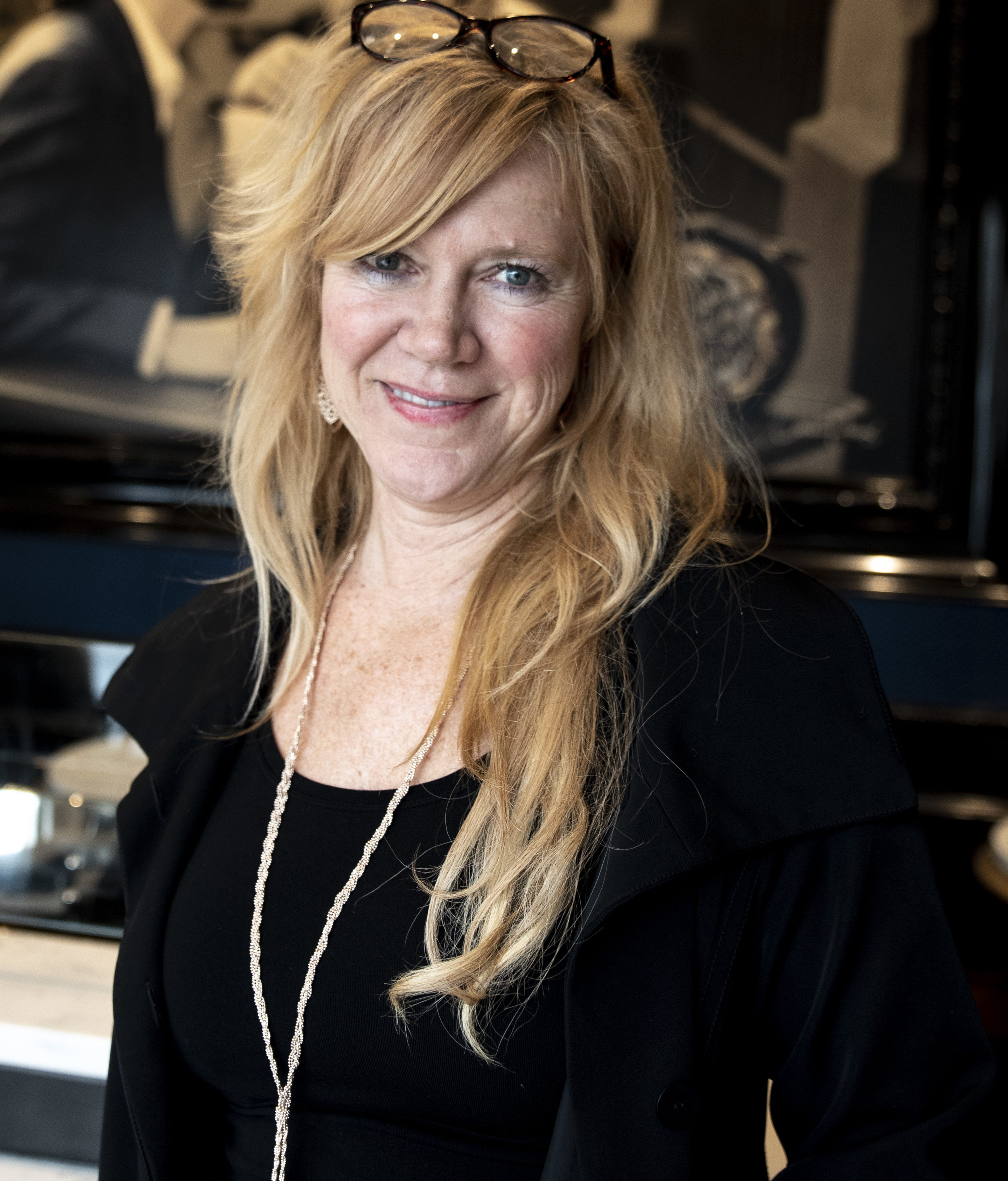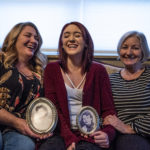How do the simultaneously artificial and real lines of race and politics affect us, and how are women in our community stepping over them to unite?
By Mia Pohlman
The first time I heard the term “white studies,” I was in my first year of graduate school. Eighteen years of kindergarten through college education, and although I had been taught about Native Americans in fifth grade, taken more international literature classes than American ones in college and minored in African/African American studies during undergrad, somehow studying my own whiteness had never been suggested to me. In high school we’d studied world history — which we might as well call European history — and in college I’d become well-versed in postcolonial studies, but still, these fields studied the actions of people who were white, not necessarily questioning what whiteness itself meant. While people who were white were often the major players in the version of history the books taught, the concept of whiteness had primarily gone unnoticed, while the color of people who were not white was often a primary focus.
Whiteness was accepted as the default or “norm,” and therefore allowed to go unquestioned. Yet, here was a field calling us to examine it.
The field emerged as early as 1890 with W. E. B. DuBois’ writings and gained momentum throughout the 20th century, becoming more prominent in the 1990s. It was brought on by a growing consciousness that whiteness, too, has its own distinct culture that should not be seen as normative, but rather can and should be critically studied.
I was elated. Finally, I could claim culture that might be distinct, community I often saw present and admired in many black and African cultures, groups of people with fields of study dedicated to them, a bond I often felt lacking within the field-less and therefore perhaps culture-less land of whiteness.
I was also convicted. Taking a look at what it means to be white might not always be pretty, I knew, and might cause me to have to make changes in my thinking, assumptions, habits.
Either way, it felt like something important to do.
Connecting in real life
Highway 74 runs through Cape Girardeau, physically dividing part of the Cape Girardeau community from the other. It’s a line many might take for granted as a roadway of convenience, but for Koreena Woodson, co-chairwoman of Authentic Voices, the effects of this line are prominent.
“After William Street, what real store do you have?” Woodson asks. “Everyone has to come out of South Cape. So even if it’s out of South Cape to go to Family Dollar, you can’t go to Walmart. That would be a long walk. … South Cape is divided by 74, and then you don’t have anything but gas stations, liquor stores, smoke shops. And those are three of the worst things to have, and that’s your choice once you go over 74. Even to get to a laundry mat, the closest laundry mat is on William Street. So if you’re in deep South Cape, you have to find a way all the way over there just to wash your clothes. So that divide was major for the people of that neighborhood, even if they didn’t see it for themselves. That’s them figuring out a ride, that’s them trying to come up with gas money, that’s them going a little bit further. It kind of divided everything.”
It’s something Woodson is working to bring back together through Authentic Voices, an organization that seeks to connect impoverished areas of the city. Her goal is to unite people, through bringing pride to her neighborhood and changing the way all members of the community perceive it.
“There’s always a difference, even when people speak about Cape, there’s Cape and South Cape,” Woodson says of why she saw a need for an organization like Authentic Voices. “We just wanted to connect the two so that it’s a whole, and try to help people connect with those that can help them improve their lives.”

The grassroots organization’s focus is on creating opportunities for families and neighbors to interact in person, rather than from behind technological screens. They have erected two Little Free Libraries, one by St. Mary’s School and one behind the Community Caring Council, to encourage people to talk with their neighbors, face-to-face. They have plans for a multicultural and Juneteenth festival, which celebrates the abolition of slavery in the U.S. Authentic Voices is also working for the beautification of South Cape, lobbying for something as simple as flowers or lights or a trash can around the walking bridge that crosses over Route 74. Woodson hopes community members from all areas of Cape Girardeau will be a part of this, through volunteering their gardening skills or attending events in South Cape, or even offering a smile, hug or extra food.

Stepping outside our technological screens and comfort zones fosters empathy. This, Woodson believes, is what creates strong communities.
“Everybody usually has different struggles. Whether you’re rich or poor or in-between. Everybody has a struggle,” Woodson says. “Sometimes people just don’t have the support they need to make it through these things. And I think when you’re poor or you live in a poorer neighborhood and you don’t have access to all of the resources to educate yourself, you’re not going to be self-sufficient. You’re not going to know what to do. … So I think it’s important to empathize with our community members to say, ‘Hey, let’s try to help you get self-sufficient.’ Because if you help somebody get self-sufficient, they’re going to become connected to the community, they’re going to want to see the community thrive, they’re going to want to really be a part of that community, and that’s what’s going to make Cape the best Cape that we have.”
There is no scientific basis for race.
That’s what scientists are discovering. Instead, race is a socially constructed phenomenon, historically used to justify unjust power structures. Skin color is a continuum, not compartmentalized categories; there is often more variance within “black” and “white” and “brown” than there is between each category.
The reason different shades of skin occur has to do with humans’ migration history and the way different groups adapted to sun exposure in the parts of the world where they settled, writes Elizabeth Kolbert in “Skin Deep,” featured in the April 2018 issue of National Geographic. All of our ancestors originate from Africa. Fossils found in Morocco studied by scientists show that “anatomically modern human features began appearing as long as 300,000 years ago.” People remained in Africa for approximately the next 200,000 years, migrating within the continent and forming new populations.
Humans didn’t leave Africa until 60,000 years ago, reaching Australia 50,000 years ago, Siberia 45,000 years ago and South America 15,000 years ago, according to Kolbert. Since the longer a group is separated from another group means more differences in genetics through adaptation to their distinct environment, Kolbert writes: “The deepest splits in the human family aren’t between what are usually thought of as different races — whites, say, or blacks or Asians or Native Americans. They’re between African populations such as the Khoi-San and the Pygmies, who spent tens of thousands of years separated from one another even before humans left Africa.”
So if the differences in race aren’t as real as we think they are, why do we see different shades of skin tones?
It’s because of the way people adapted to sun exposure, Kolbert writes. “Dark skin is favored in the tropics because it shields tissue from dangerous UV rays. In regions with less sun, lighter skin allows the body to absorb enough UV rays to synthesize vitamin D, which is needed for healthy … immune systems.”
It’s not much to base division on. And yet, it’s what past generations have made real and what we often continue to allow ourselves to use today to create an “us” and a “them.” While our brains are biologically wired to identify with those who are like us because that is a useful evolutionary survival skill, they can be trained to identify with others based on any quality. That’s what New York University neuroscientist Jay Van Bavel, who studies group identity, is finding, as David Berreby writes in National Geographic’s “The Things that Divide Us.” Because of our country’s history, we have been taught to see skin color as an inherently defining characteristic.
But maybe it doesn’t have to be that way.
Border Crossings
I read “The Shadow Lines” by Amitav Ghosh as a junior in college. I don’t remember the details, except that it entails two characters whose childhood experiences with crossing borders profoundly affect them as adults. The details are not as important as the fact that this novel was formative in shaping my thinking. Reading it was the first time I realized: borders between countries are only real because we say they are.
I had realized that on a certain level as a teenager, too. I had always imagined borders like the lines drawn on maps: tangible, some sort of line on the ground, separating places and marking them as distinctly different. Instead, what I found when I was 15 and walked into Mexico: there was no line. There was no fanfare. Nothing to mark my exit from one step or my entrance into the next as extraordinary or different. It wasn’t real. The ground looked the same on both sides.
And yet, at 22, alone abroad for the first time, at border control in London with my backpack, holding my passport out as an offering to make me acceptable enough to pass, I realized borders are also real: the unsmiling woman in the bullet-proof vest asked me questions I didn’t know the answers to. She let me cross only after harshly chiding me for my naïveté, which the privilege of my white skin and middle-class American-ness had enabled me to keep for so long, always allowing me unquestioningly into anywhere to which I asked access. This woman showed me, briefly, what it means to be on the outside asking for entry, what it means to be suspect while innocent. She showed me: people on the inside don’t want people on the outside even potentially endangering their safety. This is why people take borders seriously. Borders are real because our fear and the necessity of small units of political organization make them so.
Robyn Walker, executive director of Cenet, recalls a moment in a Cape County classroom: an Arabic woman in the Cenet program was speaking, and a grade school student made the comment, “I was taught that I shouldn’t like you, but you seem really nice.”
It is one thing Walker has learned through her own experiences of crossing international borders.
“People do not necessarily represent the politics,” Walker says.
As it turns out, Cape Girardeau is a hub for international education, helping young people from all over the world cross borders as they come to work in America or travel out of the United States to study abroad. The organization making this possible is called Cenet, and it was founded here as a way to promote international exchange. One of its central offices is located in the Marquette Tech District in downtown Cape; the other is in Nashville, Tennessee.

Walker herself studied abroad in Malta while a student at Southeast Missouri State University through the Magellan Exchange, later completing an internship in Italy. She went back to Malta for her post-graduate work, where she earned her teaching certification. She met her husband, who is Danish, and moved to Denmark, where she taught for a number of years. Now, the couple splits their time between Denmark and the U.S.
A constant across borders, she says, is friends and family.
“That’s what it’s all about in every culture that I’ve lived in,” Walker says. “That’s the top priority, as it should be. So I think people express it differently, cultures express that differently, but … everyone needs that, everyone wants that, and that’s beautiful.”
Friendship, Walker believes, is the key to overcoming fears based on cultural difference.
“You don’t have to go out of the country to experience differences,” Walker says. “We have differences right here in Cape County. And I think just to maybe spend a little more time getting to know those people who might be a different color or might be from a different socioeconomic background, because I do think there’s so much more good than not good in the world. … It really just takes one friendship. One understanding and one other person outside of your community, or outside of your world, to shift that line and break that barrier. Maybe there is nothing to really be afraid of.”
A Pause
The main cause for whiteness studies is that whiteness should not be the standard “norm” everything is measured by. When we cease to see things, we no longer examine them, and they become normalized. Not examining the way our skin color allows us to walk through the world allows cultural habits and cycles that are unhealthy to perpetuate themselves.
I am not sure how we live in a society in which so many of our neighborhoods, workplaces, churches and friend circles are still segregated. I don’t have to say it for people to know: desegregation takes longer than the amount of time allotted for a law to go into place.
The thing is, laws themselves don’t make changes. It is people enacting those laws that make the change.
Working Together
When Felice Patton’s son was murdered in the 500 block of South Frederick Street in Cape Girardeau in 2015 and no one could tell her who had committed the crime, she says she was in a “dark place” for months, unable to go to work or even begin to think about creating ways to address the violence happening within her neighborhood. That was when she says she realized she was being asked to forgive.
“I had an encounter and [God] said, ‘You’ve got to forgive. You’ve got a murderer, but you’ve still got to forgive,’” Patton recalls. “So that wasn’t hard for me not to do because I am a Christian, but it wasn’t my first thought. I wanted justice. But I had to [forgive] on my journey with him, I had to forgive.”
Patton soon found out: from 2000 to 2015, there had been 16 murders in a 2.7-mile radius in Cape Girardeau. Of those murders, more than half were unsolved.
Patton took to the streets, meeting the families of these victims and talking with people to find out why no one volunteered the information they knew about these cases. She found out that distrust of the police and fear of retaliation were the two biggest factors. This knowledge led to the creation of Stop Needles Acts of violence Please (S.N.A.P.), aimed at opening the lines of communication between the community within this radius and the police, through implementing an anonymous tip line.
To further create healthy relationships, policemen are also present at each of S.N.A.P.’s monthly meetings, as well as at their block parties, to help give information to people and to be a friendly face. The organization has also created a resource center at 402 South Sprigg Street in Cape Girardeau, where they offer mental health and bereaved counseling and a mobile job center. They hold prayer marches and pray for Cape Girardeau at their business each Tuesday. They have been key in getting trauma training for teachers within the local schools and advocating to close the gap in achievement between area elementary schools. They listen to the stories of people who are homeless. They are currently in need of a lawyer to help them become a 501c3 nonprofit organization.

“At S.N.A.P., we want to be accessible, visible, consistent and practical,” Patton says. “You’re not better than me ‘cause you’re white, and I’m not better than you ‘cause I’m black. We’re not superior and all that kind of stuff. We got to work this thing together, ‘cause it’s messing with all of us. It’s not helping either of us. It won’t help this town to grow in the 21st century. We’re behind on that part. But we want to make that change, and we know it’s not going to happen overnight, but look at all the good things that’s happening. … We want to be a kind, gentle tool to educate people and to nurture people and teach. … We do it a day at a time, a unity tea at a time, a prayer march at a time.”
Patton says she is hopeful about the Purpose Built model and what other organizations in the area are doing to work together. What it takes, she says, is unity.
“Some understanding, some peace, some love,” Patton says. “Not hate. See, ‘cause hate killed my son. But I come with love instead of hate, and I had to forgive him, and that’s love.”
A Question
Does race even matter? Does talking about it lessen the divide, or only make it wider? Does compartmentalizing my experience as a white woman and yours as a black woman unite us or separate us further?
I don’t know.
Remember
We learned it as kids: at first, it looks like a bunch of random dots next to numbers on a page, tiny marks divided by all that blank space. You make sense of it like this: find the dot next to the number one and place your pencil there. Next, find the number two and drag the lead across the page to the dot. Next, find the number three and draw a line from the number two dot to the number three dot.
Keep going. Soon, the picture will make sense, if you continue counting, if you continue drawing lines to connect the dots.
Because it’s true: lines can be used to divide. But they can also be used to connect.
Final Thoughts
I’m not entirely sure yet I know what it means to be white, but I am learning. I cannot speak for all people who are white, but I can speak for myself. It does not mean pumpkin spice lattes and unintelligent catchphrases and not being able to dance (although, perhaps there is some truth in often being too self-conscious to dance.) No. It means five generations of my ancestors before me working the land and sacrificing their own comfort to build a life for their progeny — me — so I could go to college and graduate school without ever questioning its possibility. I am grateful to them. It means large family gatherings and the religion I was gifted with at birth and traditions that remind my family who we are and where we come from. It does not nullify the hard work I have put into creating my life and my belief systems, but it has helped, and has shaped my life profoundly.
In Southeast Missouri, it also means this: on a daily basis, I am not asked to question my skin color, or to think about it.
Unless I ask that of myself.
I think that is important to do, if we are all going to begin to work together.
Robyn Walker of Cenet says it like this:
“I also believe in mankind. In all its imperfection,” she says. “I think the majority of people are striving to make the world a better place to be. And that’s what I think you see when you cross those lines. You see, oh my gosh, they’re just like me. They’re worried about their children, they’re worried about paying their mortgage, they’re worried about their pet that might be sick. We’re all really just worrying about the same things. And that, I think, helps to unify more than divide.”

